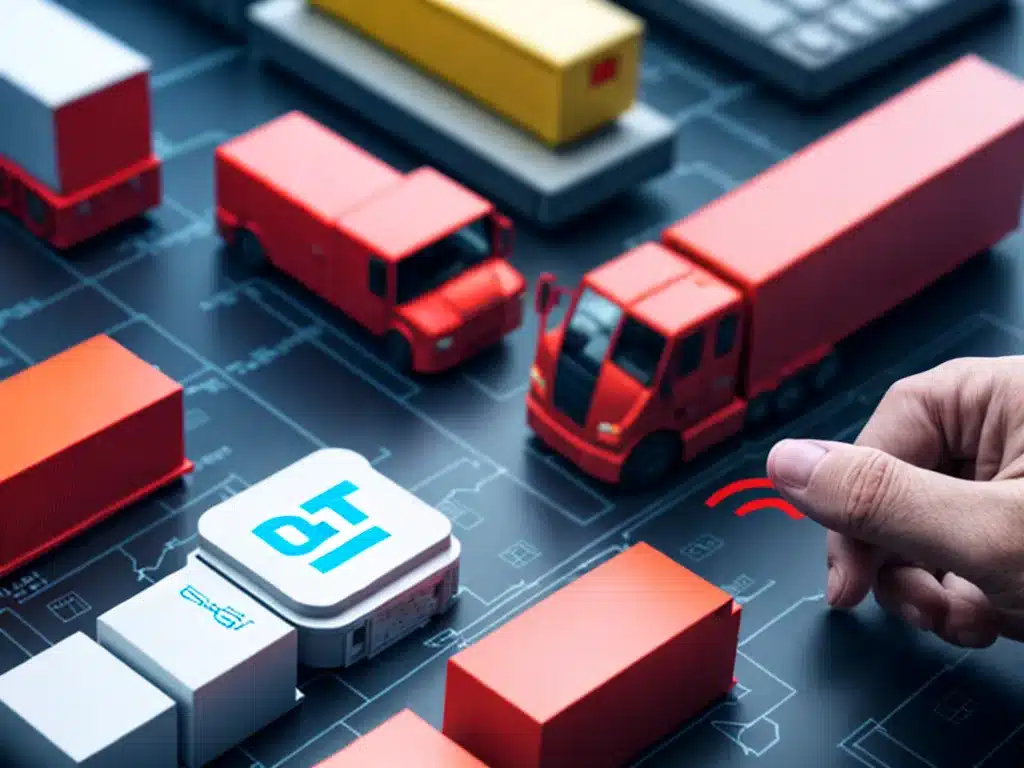IoT in Supply Chain Management: Streamlining Operations
Introduction
The Internet of Things (IoT) is transforming supply chain management by enabling companies to track assets and obtain data in real time. This allows for greater visibility, automation, and analytics across the entire supply chain. Implementing IoT can help companies optimize their operations, reduce costs, and provide better customer service. In this article, I will provide an in-depth look at how IoT is impacting supply chain management.
How IoT Enables Real-Time Visibility
One of the biggest benefits of IoT in supply chain management is real-time visibility into the location and condition of assets as they move through the supply chain. This includes visibility into:
Inventory Levels
IoT sensors placed on pallets, containers, and products can track inventory levels in warehouses, stores, and in transit. This provides real-time information on stock levels across the entire supply chain network.
For example, IoT enabled shelves can automatically detect when stock is running low and trigger re-ordering. This prevents out of stocks and improves customer service.
Asset Location
GPS tags, RFID tags, and other IoT sensors can pinpoint the geographic location of shipments, pallets, and individual products as they move through the supply chain. This provides visibility into where assets are at all times.
For instance, companies can see when a shipment leaves a supplier, arrives at a distribution center, gets loaded on a truck, and arrives at a retail store. This improves planning and on-time delivery.
Asset Condition
Sensors can also monitor the condition of assets, such as the temperature, humidity, and light-exposure of perishable goods or fragile items.
For example, an IoT sensor on a food shipment can alert a grocery distributor if temperatures start exceeding safe levels so they can take action to avoid spoilage.
How IoT Enables Analytics and Automation
IoT provides a massive amount of real-time data across the supply chain. This can feed into analytics software and machine learning to uncover insights and automate processes. Key capabilities include:
Predictive Analytics
The data from IoT sensors enables predictive analytics, such as forecasting demand more accurately and predicting potential equipment failures or shipment delays. This allows companies to take proactive steps to mitigate risks and plan more intelligently.
Automated Re-Ordering
IoT data can automatically trigger re-ordering of inventory when stocks get low. This reduces the likelihood of stock-outs and the costs of having to expedite emergency orders.
Automated Route Optimization
GPS data from trucks can feed into route optimization algorithms to determine the most efficient routes and adapt to changing conditions like weather or traffic. This reduces fuel costs and delivery times.
Preventive Maintenance
Sensors on equipment like forklifts can track usage and performance data. Software analyzes this to predict maintenance needs and trigger repairs before breakdowns occur. This avoids downtime and costs.
Key Benefits of IoT in Supply Chain Management
Implementing IoT across supply chain operations provides many quantifiable benefits:
-
Reduced operating expenses – By automating processes and optimizing logistics, IoT reduces labor, fuel, and inventory carrying costs. One survey found 75% of companies saw reduced expenses.
-
Faster delivery times – Real-time tracking and automated route optimization with IoT speeds up shipments between suppliers, DCs, and stores. Companies have reported 20-50% improvements in on-time deliveries.
-
Increased sales – Better inventory visibility ensures stocks are available when customers want them, leading to higher sales. Out of stocks can be reduced by up to 80%.
-
Improved customer satisfaction – Faster and more accurate fulfillment prevents shortages and delivery delays, improving customer experiences.
-
Higher supply chain agility – The data from IoT sensors gives companies better ability to predict disruptions and adapt quickly to spikes in demand or material shortages.
Key Challenges of Implementing IoT
While IoT offers major benefits, incorporating it across supply chain operations also poses some challenges:
-
Upfront costs – Installing sensors, networks, and data analytics capabilities requires major upfront investment. The ROI can take time to be realized.
-
Technical integration – Getting different sensors, networks, and systems to interface correctly is complicated. IoT deployments often require systems integration services.
-
Data management – The massive influx of IoT data can be difficult to collect, manage, and analyze without the right software tools. Data lakes or warehouses are needed.
-
Security risks – With so many sensors and data, it provides a large attack surface for hackers. Strong cybersecurity and data governance is critical.
-
Legacy processes – To gain advantages from IoT often requires reinventing processes. Change management and employee training is key.
Conclusion
Implementing Internet of Things across supply chain operations provides game-changing visibility, analytics, and automation. This leads to major quantifiable improvements in costs, customer service, and agility. However, to capitalize on IoT, companies must carefully manage the upfront costs, integration complexity, data flows, security risks, and business process redesigns. With the right strategy and execution, IoT can transform supply chain management.













